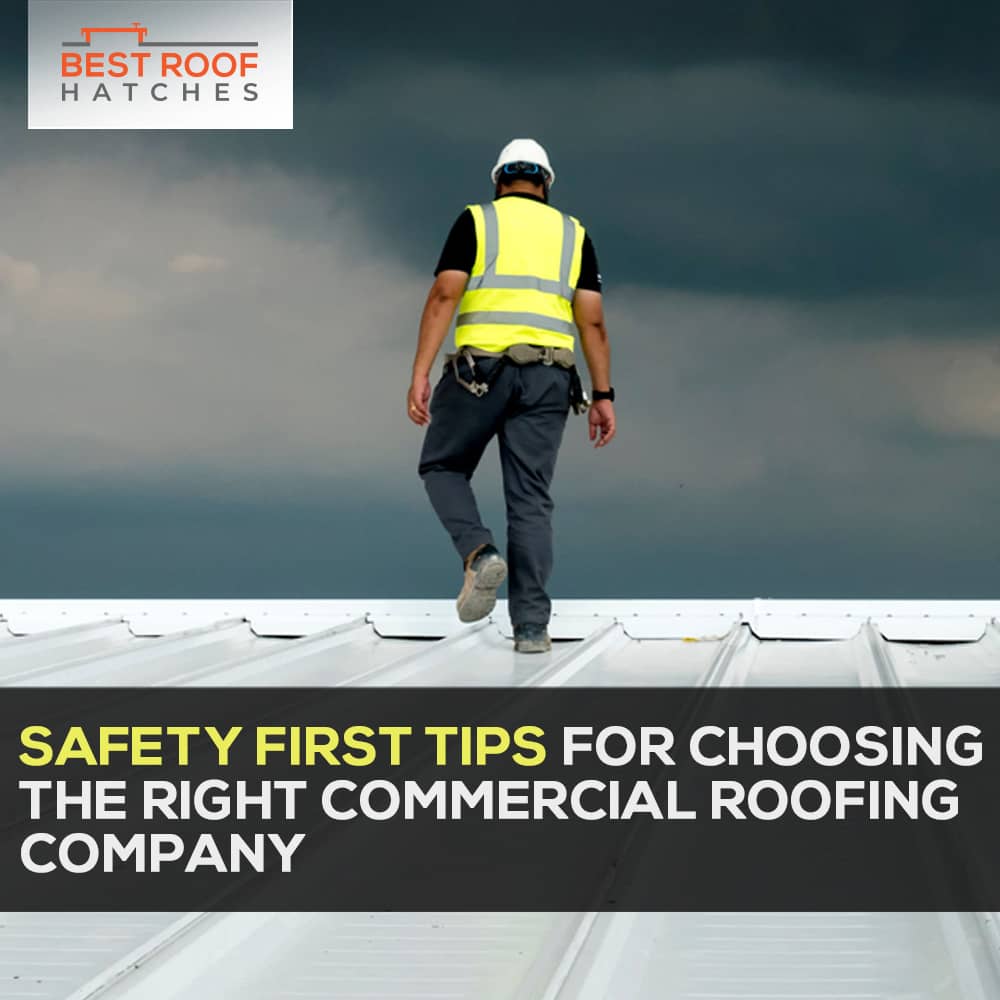Share this
Safety First: Tips for Choosing the Right Commercial Roofing Company
Posted by Best Roof Hatches on 2020 Dec 8th
It is vital to have sturdy, durable, high-quality roofing for your commercial and industrial buildings. If you are hiring a contractor, take the time to do your research. Reading reviews of a company involves more than getting opinions on their quality of work; it is essential to verify their safety standards and their use of industry-standard materials and equipment.
Roofers encounter many potential hazards on the job, mostly due to working at heights and using ladders. Power tools, excessive noise, working within proximity to electrical panels, and extreme temperatures all require special precautions. Without proper safety measures, it will ultimately affect work quality and even risk injuries. It starts with being aware of potential roofing safety hazards and understanding the essential safety protocols that need to be in place before a roofing project starts.
Common Roofing Safety Hazards
To protect roofers from serious incidents and injuries, a contractor needs to identify the job site's common hazards and follow critical safety steps to control the possible risks.
Fall Hazards
Before a roofing team starts a project, a roofing company should assess the following questions:
- Is the existing roof strong enough to support the roofing crew and equipment?
- Are there guardrails available, and are the ladders in good condition?
- Have all the items on the roofing safety checklist passed inspection?
Being up-to-date on OSHA Roofing Regulations is also an essential requirement.
Power Tools
Power tools used in roofing include chainsaws, drills, planers, air compressors, and nail guns. However, these may be dangerous if not handled correctly. Improper use at considerable heights can cause slips and falls, which can turn into serious injuries. Thus, work crews need training to properly operate power tools and ensure that they are not defective.
Electricity
Because roofs are often close in height to power lines, rooftop workers need to be mindful of safety. Carelessness around electrical equipment can result in electrical shock, fires, burns, and even death. Regular safety inspections are essential.
Hazardous Substances
Exposure to paint fumes, asbestos, and other harmful chemicals can also be a concern. Still, a company minimizes the risk with a safety checklist that outlines precautionary measures for these substances' safe handling.
Extreme Temperatures
Extreme weather conditions are another safety concern. Workers can easily slip and fall if working outside in windy or rainy weather. The moisture and wet materials can cause a loss of footing and dangerous slippages. Moreover, a strong wind can make working conditions hazardous. If the weather poses safety risks, a toolbox talk as a team to decide a revised work plan for the day is in order.
Create a Safety Plan
A roofing company needs a safety plan in place to keep everyone safe on the job. Before employees start their work, a roofing contractor should conduct a 5-10 minute pre-start talk first. Discussion of the common hazards that they could encounter an assessment of the work area is necessary. Proper permits must be in place.
Check Equipment
Working at heights requires quality ladders to ensure workers' safety. Aluminum or stainless steel is usually best. Regular checks for defects or problems with the steps and safety catches are also required.
Use Safety Harnesses
Using a harness may not be comfortable, but it can save your life or prevent serious injuries in case of an accident.
Make Sure to Clear the Site
The construction site must always be clear of debris to avoid accidents. It will help minimize the risk of tripping or slipping. Workers must keep everything clean and clear throughout the day.
OSHA's Fall Prevention Campaign
The Occupational Safety and Health Administration (OSHA) has implemented the "Plan, Provide, and Train" campaign. This campaign aims to develop fall prevention strategies for roofing operations. Here are some of the inclusions of the campaign:
Plan
To ensure the safety of any roofing project, employers must create a plan. The plan starts with ensuring there is enough proper equipment and materials for the workers. Training the crew on how to handle specific equipment is also needed.
Provide
The employer should provide proper equipment for the job, including fall protection equipment such as harnesses, ladders, safety gear, and scaffolds.
Train
Proper training for workers is essential, especially with equipment safety. Employers should train their team about hazard recognition and ensure workers know current OSHA's Fall Protection standards. Implementation of safe work practices and supervision will keep the construction site secure at all times.
To further improve roof work safety, installing roof hatches, guardrails, and ladders from Best Roof Hatches is the way to go. Call us for more information and to place your order!

